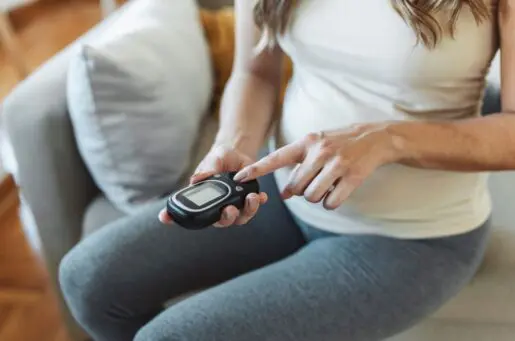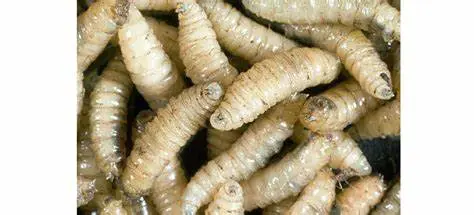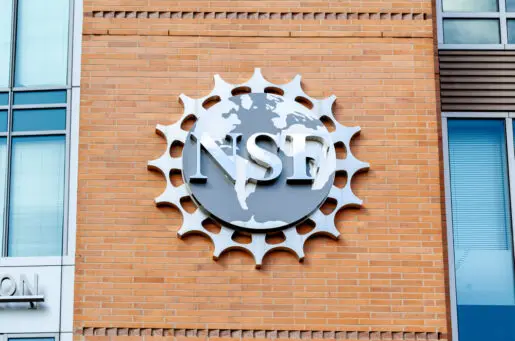Bioethics Forum Essay
Products of Conception
Deborah Costandine and I met in June of 2004, but she didn’t send me the autopsy report of her baby for another year and a half. So I didn’t start looking for more information about what had happened to her until January of 2006. That’s when Deb wrote to say she was wanted some help, so that’s when I went into the basement of my medical school’s library and started looking for her conjoined twin.
We met on a panel at the National Museum of Health and Medicine in June of 2004, at the opening of an exhibit of autobiographical artworks by Laura Ferguson, a woman with scoliosis. Deb is an artist, and I am an historian of medicine. We’d never met before, and Deb didn’t set out to talk during the panel discussion about her own experience as a mother of conjoined twins – or as she said then, “a conjoined twin.” Deb was there to talk about disability and art, not her unfinished loss of nearly thirty years earlier. But when I gave my presentation, it came up.
My talk centered on the radical difference between the typical medical images of people born with socially challenging bodies – people with ambiguous genitalia, conjoinment, achondroplasia dwarfism, and the like – and the “home movies” of such folks. The medical images are horror pictures: printed in stark black-and-white, with eyes barred over, often with the subject in pain, or at least with the facial expression twisted. The “home movies” show people with unusual bodies doing what the rest of us do: talking with family and friends, playing with pets, hiking in the mountains.
That contrast tells and impels a million stories. I learned that the first time I met a person whose picture is in a medical journal. I was sitting in a sunny backyard in northern California, meeting with a woman who has androgen insensitivity syndrome (AIS). Cheryl Chase, the founder of the Intersex Society of North America (ISNA), had brought me there to meet this woman, so I could hear her story. The woman told me how she had been a typical girl, but how, well into puberty, she had never menstruated. Her doctor wouldn’t tell her why. He used euphemisms like “you have twisted ovaries” instead of “you have testes.” That was common practice then. The belief was no woman could handle the truth that she had been born with a Y chromosome and testes.
The woman telling me her story on that bright afternoon recalled to me that, when she had found herself preparing for a long-distance move, she told her doctor she needed her medical records, to pass on to her next doctor. So he gave her some materials in a sealed envelope, and forbade her to open the envelope. As soon as she got out to the parking lot she peeked. There was a letter of introduction with the diagnosis he had withheld from her. And there was a medical journal article about her, her cousins, and her aunts. All women with AIS. All oblivious. She showed me the journal article. It included a picture of the woman from when she was about seventeen – naked, with her head cropped off, wearing a necklace she still owned. She laughed a little as she told me the story. Her daughter’s pet brown bunny hopped around the green lawn. The sky was a blazing blue. I remember all those colors, because I remember being so disoriented by the contrast between the black-and-white nude photo of that girl and the Kodachrome colors of this woman’s real life.
Among the pictures I showed at the 2004 Washington panel were pictures of Abagail and Brittany Hensel from Life Magazine – pictures of them as babies being bathed in the sink by their mother, pictures of them as young children running around at home with their brother. The Hensel sisters are pretty much two girls on the top and one on the bottom; they’re conjoined. In my talk, I contrasted these images with the scary pictures of conjoined twins just like them from medical journals – terrifying, inhuman, desperate. I asked the audience to think about how these pictures help determine what is considered possible and necessary for those born with unusual bodies.
Then Deb spoke. As I recall, she said something like, “I have never really talked openly about this, and I didn’t plan to, but many years ago I gave birth to a stillborn conjoined twin. I’ve never known what my baby looked like because the doctor wouldn’t let me see.” As I recall, most of us there ended up crying. Afterwards, I pulled Deb aside and told her I had some skills at medical history recovery and, if she ever wanted some help, she should just let me know.
The medical history recovery work came about by accident. Writing and speaking about the history and ethics of what has happened to people born with unusual bodies, I would run into people who would know very little about what happened to them. Well-meaning paternalism and shame had laid cloaks of silence over their histories. If I ran into a person who seemed emotionally and mentally ready and interested, I would give what help I could in trying to pull the cloak back. I would help them try to recover existing records, would look in the published record to see if they were there, and would give them the basic historical context of the critical medical moments of their lives.
In January of 2006 Deb emailed me. As soon as I read the first paragraph I remembered her:
On June 12, 2004 you were a presenter in Laura Ferguson’s “Images of the Less-Than-Perfect Body” program in conjunction with VSArts. I was part of the panel and revealed I had a still-born conjoined twin.
After the presentation, you offered to help me find information about my twins if at all possible. Would you still consider helping me? I have an autopsy report which I am attaching. There may be photographs and two ultrasound images. Would you consider helping me acquire possible photographs and the ultrasounds? I need some closure. As their 30th anniversary is coming up December 2nd, I would like to be able to put a face to my babies. It doesn’t matter if the images are graphic, I can prepare myself.
In subsequent email conversations, I learned that Deb knew the baby was dead at 8 months.
But I did not know until the baby was delivered [at 9 months, following induction] that they were conjoined. They did withhold that from me and that was why it was such a shock…. I had a hard time absorbing the information. By the time I thought about seeing and holding my baby it was too late. The day I left the hospital was the day we buried the boys – it went that quick.
Deb told me she had had to fight to get even the autopsy report. The hospital refused it to her until she threatened legal action. The report helped to explain why Deb sometimes referred to her “conjoined twin,” singular.
The body is that of a conjoined thoracopagus twin which weighted 4 pounds and 2 ounces. The twins are joined somewhat centrally as they face each other somewhat obliquely. […] Only one head is present. Its external features are normally developed. […] Four arms and four legs are present [….] There are two sets of male genitals, which appear normal. […] When opening the cranial cavity from the outside, a normally developed skull is present. When opening this skull, a second skull is present beneath this with an empty space in between.
“Thoracopagus” twin usually meant joined at the chest. This was a case of conjoinment in the head, too – there was a head contained within a head. Craniothoracopagus. Two bodies below emerged from one above. The opposite of the Hensel girls. That’s why the autopsy report said “baby,” not “babies.” That’s why Deb said “my conjoined twin,” singular.
I told Deb what I thought she should do to try to find out if there were any records remaining at the successor to the St. Paul hospital where she birthed. I predicted correctly that they would give her the wrong form first, and that she would have to go fill out another and try again. Meanwhile I made some calls, one to Stephen Greenberg at the National Library of Medicine’s History of Medicine Division, to ask him whether there might have been a 1970s Minnesota medical journal that would have carried an account of the birth, a journal that I might not pick up in PubMed. I also called Elaine Challacombe at the University of Minnesota’s Wangensteen Historical Library to ask if she might know if the hospital where Deb birthed had had a pathology collection, and if so where it might have gone. Part of me was thinking someone might have saved Deb’s offspring as a specimen.
After all, my own medical school had been agonizing for the last several months about what to do with its own “babies in bottles” collection in the anatomy lab. Everyone understood a lot of those specimens probably came from women like Deb who had only the vaguest notion of what had happened – women who knew even less than Deb, for they had never been as inquisitive.
Then I did a full PubMed search, looking to see whether I could find a published record of Deb and her twin. I looked at the year she birthed (1977) and five years forward, in case the publication had been slow. In the basement of the Galter Medical Library of Northwestern University, I found myself hopeful and pensive as I turned the wheels and set the brakes of the compacted stacks to fetch the volumes with articles that might speak of Deb. I compared each publication’s content to what I knew from Deb, ruling out each hit, one by one.
What Deb most wanted was to know what her baby looked like. So when I found an article that included a series of images of craniothoracopagus twins, I made a point of carefully photocopying that one. These were girls, and Asian, but about the same otherwise. I knew as I kept on that that was probably what I would have to give her, to give her some image, if not her own.
And then, having exhausted all the possibilities I could think of, instead of sending Deb what I had found, I sat on it all for a few weeks. I knew she was waiting. But I was worried about telling her what I had found. Even though, in the few weeks that had passed, she had found and talked to the doctor who attended her birth, maybe she had no idea what we were really talking about. If she had looked up pictures based on the autopsy’s misdiagnosis of “thoracopagus,” she would have seen images that were less disturbing – two apparent people attached at the chest.
My internist-husband finally scolded me. He did it in a gentle voice. “Listen,” he said, “all these years you’ve been mad at all these doctors for withholding medical information from patients out of paternalism. How is what you’re doing any different?”
I realized he was right. So I went ahead and sent Deb a four-page report that laid out everything we knew, and everything I could tell her that maybe she didn’t know. “[W]e have struggled with the question of whether to talk about your child or children, your twin or twins. This is because the kind of anomaly your child/ren had makes it hard for us to say whether the baby was one person or two. Yours was really in between.” I added:
Some of what you’ve been through is a lot more common than I would have thought had I been asked to guess about it ten years ago. Because of my line of work, I’ve come to meet some people who are like you in various ways – mothers who have had and sometimes lost children with major anomalies, people who try to get medical records to find out what happened years ago in their own medical histories, people who are trying to make sense of their pasts. Many of those people have been through what you have: having people assume you don’t grieve the loss of children who died from major birth anomalies before they were born; having people deny them acts and records that are rightfully theirs; having doctors think they know what’s best for their patients, only to find out years later their attempts to shoulder the pain of anomalies left those patients in a state of permanent uncertainty – emotionally, medically, historically.
I told Deb I had been unable to find anything about her twin(s) specifically, but told her what I could about the body. I included two crude drawings of my own based on the autopsy report – one for the internal anatomy, one for the external – and I also included the text and pictures from the medical journal article that described the girl twins who were like her boys. I warned her about the authors’ use of the word “monster.” I gave her a recent article from the New England Journal of Medicine about patients’ rights to medical records, so that she would know she had the right to keep pushing if she wanted. I closed by saying it had been my privilege to help.
I didn’t hear from Deb for a few weeks. I worried. Then an email came from her:
I’m sorry I’m so late in letting you know your letter came. You have helped me so much in dealing with issues I thought were dealt with long ago. I knew about the term “monster” when I looked for more information in 1977. It is a horrible term and I’m glad it is out of vocabulary now. Since we have started corresponding, I have had two major anxiety attacks and I know they are associated with my twins and issues I did not resolve. When I saw the pictures I did cry, but it helped to have some context. The photo of the beautiful girls helped and I felt a bonding with them and my babies. THANK YOU!!!!!!! They were beautiful. Monday I give my presentation about conjoined twins and my personal history in my psyc[hology] class – child/adolescent development. You have helped me so much, it’s hard to express. I will write again after the presentation to let you know how it goes. I think it will help.
Then about a month later up popped another message from Deb:
I took ceramics at the local community college. I am attaching 2 pics of my newest project. These little sweeties are in clay. After they dry, I will fire, paint and glaze them. I plan on having about 9 different types of conjoined twins [sculptures in a series…] I feel like I was holding my boys when I was creating this sculpture for the first time.
The babies Deb had once made in the flesh she was now making in clay. The picture was amazing. Deb had turned that grim autopsy report and those intensely sad medical pictures I provided into a real life vision of her babies: the clay babies were on their bellies, exactly as they would have looked if born lively and laid on a blanket.
It must be that mothers, like their babies, are products of conception. On the day I met Deb in 2004, before the panel discussion at the National Museum of Health and Medicine, the curator Adrianne Noe very kindly showed me some of the highlights of their collection. She knew of my interest in conjoined twins, so she made a point of showing me “our conjoined twins” – near-term baby girls with beautiful faces, thoracopagus, preserved in a rectangle of crystal-clear plastic. Pink and lovely. She told me about how some people would come specifically to visit these twins again and again – how when the museum was undergoing renovation people came to ask where they were, to wonder when they would be back. She told me that it seemed as if women who had had miscarriages were particularly drawn to them. Would-be Debs in search of someone to see.
To see the art that came out of Deb’s reflections, click here.
This article appeared first in ACOG Clinical Review 12, no. 2 (April/May 2007), 10-13.












